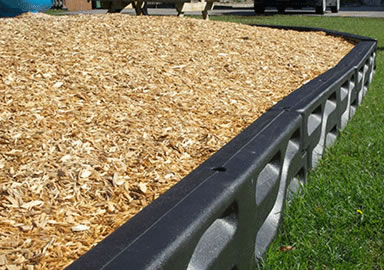Welcome to the second part in our multipart blog series examining a young boy's fall and injury at a public playground. If you missed the first part in this series, click target="_blank" rel="nofollow noreferrer noopener" to read it. In this post, we will highlight some resources that designers of public playgrounds can use to help ensure their designs are reasonably safe.
The U.S. Consumer Product Safety Commission's (CPSC) Public Playground Safety Handbook is an important safety resource for playground designers and is freely available from The CPSC at www.cpsc.gov/s3fs-public/325.pdf. The Public Playground Safety Handbook discusses topics including site selection, playground hazards, maintenance, and safety testing methods. Since our case involved a fall from an elevated platform, the recommendations in the handbook on impact absorbing playground surfacing were of interest to us. You may recall that in our case the young man fell seven feet from an elevated platform surrounding a fireman's pole and struck a concrete floor. The Public Playground Safety Handbook specifically lists concrete as an inappropriate playground surface. Instead, the handbook recommends materials like pea gravel, sand, rubber mulch, wood mulch or chips, or any material tested to the ASTM F1292 standard, which we will briefly discuss below.
The Public Playground Safety Handbook defines two important terms related to falling on playgrounds. The fall height is related to the type of equipment under consideration and is defined as:
The vertical distance between the highest designated play surface on a piece of equipment and the protective surfacing
beneath it.
For a platform, the fall height is the distance between the top of the platform and the surface below. The critical fall height is related to the impact-absorbing ability of a protective surfacing used on a playground and is defined as:
The fall height below which a life-threating head injury would not be expected to occur.
Playground equipment that presents a falling hazard should always be designed with an appropriately placed protective surface below the fall hazard so that the critical fall height rating of the surfacing material is greater than the fall height of the equipment. In our case, it would have been feasible for the playground designer to install a number of protective surfacing materials that would have prevented or reduced the severity of the child's injury.

Figure 1: A view from a vendor's website of a material known as engineered wood fiber that is designed for use as a playground surface.
ASTM F1292, titled Standard Specification for Impact Attenuation of Surfacing Materials Within the Use Zone of Playground Equipment is an industry standard used by designers of protective surfacing intended for use in playgrounds. The standard describes a test method involving dropping an instrumented, weighted object on a surface and measuring the resulting acceleration in the object. Designers of public playgrounds do not necessarily need to be familiar with the specific methods in ASTM F1292. They should be aware of the need to specify and install playground surfaces that provide adequate protection, and that critical fall height ratings based on ASTM F1292 testing methods provide one means for determining if a playground surfacing material under consideration provides adequate protection against injury.
ASTM F1487-07, titled Standard Consumer Safety Performance Specification for Playground Equipment for Public Use, is another ASTM standard that gives guidance on public playground safety. As its name implies, the standard is concerned with playground equipment. In our case, the standard's guidance on sliding poles was of interest. ASTM F1487-07 defines the fall height for a sliding pole as 60 in. below the highest portion of the pole to the protective surface below.
Another key concept in ASTM F1487 is the use zone, defined as the:
area beneath and immediately adjacent to a play structure or equipment that is designated for unrestricted circulation
around the equipment and on whose surface it is predicted that a user would land when falling from or exiting
equipment.
The use zone varies in size and shape depending on the type of public playground equipment under consideration. The use zone needs to be covered with protective surfacing with a critical fall height equal to or greater than the fall height of the equipment.
The CPSC Public Playground Safety Handbook lists a total of eleven ASTM standards related to playgrounds. The listed standards cover diverse topics including surfacing and equipment, maintenance, fencing and barriers, and home playground equipment. We at Warren have experience evaluating the safety of playgrounds and interpreting the relevant safety standards. If you have a case involving a playground or playground equipment, we encourage you to give us a call.
Stay tuned for our next post in this series on public playground design and safety. We will discuss some of the technologies and testing methods available to designers to ensure that public playgrounds are reasonably safe.
Jeffrey Warren, PhD, PE, CSP, is the chief engineer and CEO at Warren specializing in mechanical, machine design and safety. His deep expertise in machine design and safety analysis makes him a frequent presenter, trainer and expert witness. In addition to investigating more than 2000 claims involving property damage and injuries related to machinery and equipment since 1987, Jeff has an undergraduate degree in Mechanical Engineering from the University of North Carolina as well as a Master of Science and a Doctorate in Mechanical Engineering from Virginia Polytechnic Institute and State University - both with machine design emphasis.
©Copyright - All Rights Reserved
DO NOT REPRODUCE WITHOUT WRITTEN PERMISSION BY AUTHOR.











